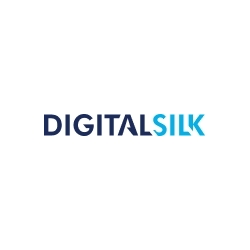As the landscape of digital marketing evolves, small and medium-sized business (SMB) leaders are under increasing pressure to optimize their advertising strategies while managing tighter budgets. The rise of artificial intelligence (AI) and automation tools provides an unprecedented opportunity to enhance the efficiency of Google Ads campaigns. In 2025, industry data suggests that automation and machine learning are no longer optional but essential components of a successful digital marketing strategy. To leverage these advancements, it is vital for SMBs to understand how to implement and manage automation effectively in their advertising workflows.
The first step for SMBs looking to integrate AI-driven automation into their Google Ads campaigns is to familiarize themselves with various tools available in the marketplace. Make, Zapier, and other integration platforms can connect different applications and create automated workflows. Begin by mapping out your current advertising processes to identify repetitive tasks that would benefit from automation. For instance, consider tasks such as data entry, reporting, and ad performance analysis. Identifying these tasks will serve as a foundation for implementing more efficient workflows.
Once you have pinpointed the tasks that are ripe for automation, you can start implementing processes. For example, using a platform like Make can help you automate the reporting of key performance indicators (KPIs) from Google Ads. You would set up a connection to your Google Ads account, choose the metrics you wish to track, and then structure a workflow that extracts this data at regular intervals. This not only saves time but also ensures you have up-to-date information to make informed decisions.
Additionally, Zapier can facilitate integration between various applications you use in your marketing stack. Suppose you want to receive instant alerts in Slack whenever a specific campaign surpasses its budget. In that case, you can create a ‘Zap’ that monitors your Google Ads account and sends notifications based on predefined criteria. This real-time insight allows for swift adjustments and helps prevent overspending.
Beyond tracking and reporting, SMBs can also automate the optimization of their ad performance. Google Ads offers features like Performance Max campaigns that automatically manage your ad placements based on machine learning algorithms. However, to maximize ROI, consider adding layers of manual oversight to these automated settings. Regularly reviewing campaign performance helps to ensure the AI is aligned with your overall business objectives and brand message.
AI tools can also aid in creative automation. Platforms such as Ad Creative AI can generate multiple ad copies and visual assets that you can test simultaneously. This allows you to discover which variations perform best without the resource-intensive process of developing each piece manually. For SMBs that may lack expansive budgets, the ability to test several ad creatives at once can lead to improved click-through rates and conversion rates over time.
Budget optimization is another area where automation shines. Through advanced algorithms, machine learning systems can analyze which ads yield the best results and adjust spending in real time. Setting up automated bidding strategies in Google Ads helps you allocate your budget efficiently based on the performance of each campaign. By letting AI determine where to invest more heavily, you can maximize your ad spend without needing to micromanage every decision.
However, it is crucial to navigate the risks associated with increased reliance on automation. While AI can enhance efficiency, it is not infallible. Regular oversight and analysis remain essential to ensure that automated decisions align with your business values and objectives. For instance, unexpected market changes require a human touch to adapt your campaign strategies. Regular audits of automated processes can help mitigate risks and ensure that the brand’s voice and values are consistently represented.
The adoption of these practices also necessitates training and education. To ensure that internal teams are well-equipped to manage these automated processes, investing in training programs focusing on AI tool utilization and data analysis is advisable. This empowers your staff to make data-driven decisions and enhances overall organizational competencies in navigating a technology-first marketing landscape.
In conclusion, the integration of AI and automation into Google Ads management represents a significant opportunity for SMBs to enhance their marketing efforts while optimizing resources. By taking a structured approach to identify tasks suitable for automation and leveraging platforms like Make and Zapier, companies can streamline workflows, improve campaign performance, and ultimately increase ROI. Staying vigilant about the risks associated with these technologies will allow businesses to harness their full potential while maintaining brand integrity.
FlowMind AI Insight: The strategic adoption of AI and automation in digital marketing can provide SMBs with a competitive edge, enabling more efficient workflows and smarter decision-making. By investing in the right tools and training, businesses can navigate the evolving landscape of advertising with greater agility and precision.
Source: https://www.newsfilecorp.com/release/263961/Industry-Overview-by-Digital-Silk-AI-Tools-Changing-Google-Ads-Campaign-Management-in-2025

